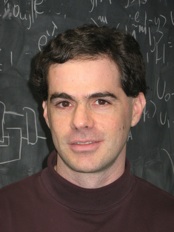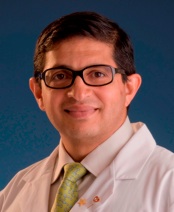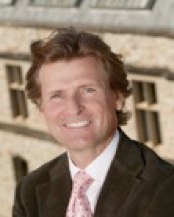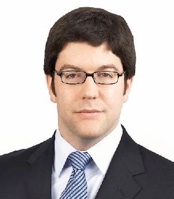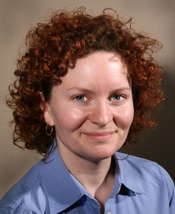




Table 13: Douglas Evans, Ph.D., Professor, Department of Environmental and Resource Studies, Trent University
Can We Have a Resource-based Economy Without Environmental Degradation?
The Canadian economy is heavily based on resource extraction, and we all enjoy an elevated standard of living because of our wealth of natural resources. However, with resource extraction comes the production and release to the environment of many contaminants, including mercury, arsenic, cadmium and other heavy metals that are potentially toxic. How do we deal with this conundrum of economic vs. environmental trade offs?
Prof. Evans’ area of research, biogeochemistry, is the study of interactions between organisms and the earth and the chemicals that get passed between the two. He has worked on problems of contamination in aquatic environments for over 30 years and has worked with industry to develop ways to monitor and reduce harmful emissions. He has acted as a consultant to governments and industry on issues of contaminant release and has published over 100 papers. He has been the Dean of Graduate Studies at Trent University for six years.
Table 14: Greg Van Alstyne, B.A. Hons, M.S., Director of Research, Strategic Innovation Lab, OCAD University
The Future of Media
The media we use to keep in touch with each other and tell our stories are rapidly evolving through technological innovation. And we are changing too. As our reading habits, cultural ideas, relationships and working lives fall into the transformative space that McLuhan named the ‘maelstrom’, how can we anticipate and understand the changes? What might our media become by 2020?
Greg Van Alstyne is a futurist, researcher and creative director with 25 years experience in design and communications for clients including NFB, MoMA, Rizzoli, and Prada. He is lead investigator for 2020 Media Futures, a project to future-proof our ‘creative cluster’ industries. Greg was inaugural director of the Institute without Boundaries, mentoring students developing Massive Change, a cross-platform project on the future of design. In the 1990s Greg founded the New Media Department at New York’s MoMA, launching the museum’s Website, interactive exhibits with MIT Media Lab, and other projects.
Table 15: Heather Sheardown, Ph.D., Professor, Department of Chemical Engineering, McMaster University
Seeing the Difference: Ocular Advances to Improve Vision
Among the senses, vision loss is by far the most traumatic and has the greatest impact, and with the aging population and changes in lifestyle, Canada is currently experiencing what has been termed a crisis in vision health. The Sheardown group develops new materials-based treatments for the eye, including contact lenses and intraocular lenses as well as new methods of delivering drugs to the back of the eye.
Heather Sheardown is a chemical engineer who has always had an interest in health. At McMaster, she is working on the development of new ophthalmic materials. In addition she is the Scientific Director of the 20/20 NSERC Ophthalmic Materials Network. She consults extensively for ophthalmic materials companies.
Table 16: Rafi Hofstein, Ph.D., President and C.E.O., MaRS Innovation
Sunset of the Solo Scientist - All of Us are Smarter than One of Us!
It has been suggested that the fundamental discoveries by young geniuses (Darwin, Da Vinci, Einstein, Newton) were achieved working by themselves: solo scientists. This model appears to be broken; it has become apparent that many of our best ideas no longer come from solitary researchers. The complexity of science has forced scientists to create collaborative teams. A very powerful instrument called MaRS Innovation was created in Toronto to address, in the most profound way, how we can make this new model work for us. We will discuss this Ontario innovation engine and examine how ideas are turned into inventions and from there to innovation. The road is well paved!
Dr. Hofstein received his PhD and Master of Science degrees in Life Sciences and Chemistry from the Weizmann Institute of Science in Rehovot, Israel. From 1999 to June 2009 he held the position of President and CEO of Hadasit Ltd., the technology transfer company of the Hadassah Medical Organization in Jerusalem. He serves as Chair of Hadasit BioHolding Ltd., a holding company for a cluster of companies engaged in drug development and medical diagnostics.
Table 17: Franco Gaspari, Ph.D., Assistant Professor, Faculty of Science, UOIT
Semiconductor Physics and its Applications to Photovoltaic and Biomedical Devices
Amorphous silicon and amorphous carbon present a number of interesting properties, amenable to applications in photovoltaics. And the use of these materials in combination with tritium (a radioactive isotope of hydrogen and a major by-product of the CANDU reactor), has shown great promise not only in basic research, but also in applications to medical devices and the storage of nuclear waste.
Dr. Gaspari holds an undergraduate degree in physics from the University of Bologna, (Italy), and a M.Sc. and Ph. D. in Physics from the U of T. His research interests are: emerging nano-crystalline materials for application in the fields of renewable sustainable energy; third-generation solar cells; thin-film amorphous silicon, diamond-like carbon and carbon nanotubes. He has received significant funding for his research from NSERC, CFI, OCE and several industrial partners.
Table 18: Frank Russo, Ph.D., Associate Professor of Psychology, Ryerson University
How Music Moves Us
A number of proposals have been tabled over the years in an effort to explain how we perceive and respond emotionally to music. Movement may be a particularly useful lens for understanding the emotional power of music and how to best use music to support socio-emotional development in special populations.
Frank Russo is a cognitive scientist, musician, and armchair engineer. With an educational background spanning music cognition and hearing science, he is deeply interested in supporting communication of emotion in the context of music and beyond. As Director of the SMART (Science of Music, Auditory Research and Technology) Lab at Ryerson University, Frank and his colleagues have contributed to the development of several innovations including a locomotive horn that is alerting without being excessively loud, a cognitively-informed system for searching digital music databases, and a chair that uses vibro-tactile stimulation to bring music to individuals who are deaf.
Table 19: Ralph Pudritz, Ph.D., Professor of Physics and Director of Origins Institute, McMaster University
Formation of Stars and Planets: Astrobiology and the Origins of Life
The formation of stars affects how planets form around them, and on much larger scales, determines how galaxies form and evolve. How do stars form? How do planets form in the gaseous disks that are found around all young stars? And finally, how do young planets get “equipped for life” – that is – how do they acquire the water and organic molecules such as amino acids that are the building blocks of proteins?
Ralph Pudritz is a theoretical astrophysicist who has worked on star formation for thirty years. The discovery of hundreds of planets around stars has over the last decade driven his research into the new area of trying to understand how planets form – and how they may become the abodes of life. He has worked on many aspects of star formation - from the nature of star-forming clouds to the details of how stars and planets form in the gaseous disks that are observed around all young stars. Over the last few years, he has also developed research on the question of how “biomolecules” such as amino acids are manufactured in interstellar space.
Table 20: Jeremy Grushcow, Ph.D. J.D., Partner, Business Law Group, Ogilvy Renault LLP
The New Global Pharma: Innovation, Globalization and Consolidation
Pharmaceutical innovation has been one of the driving forces lengthening our lives and improving our health. As key classes of drugs lose their patent protection, the companies that produced that innovation are looking for other ways to replace their revenue: finding new models for R&D, acquiring their peers and their biotech rivals, and building their own generics and biosimilars. What form will this new industry take and how will it affect our lives?
Mr. Grushcow’s practice focuses on life science, cleantech and other technology-intensive transactions. He has represented pharmaceutical companies, private equity and VC firms, banks and operating companies in connection with mergers and acquisitions, public and private offerings, licensing deals and other commercial agreements. He is the Corporate Secretary to the Board of the Ontario Biosciences Industry Organization (OBIO) and is a member of the Genetics Society of America and the American Association for the Advancement of Science. He is the founder of The Cross-Border Biotech Blog and has authored numerous publications in both legal and scientific journals.
Table 21: Janusz Kozinski, Ph.D., Dean, Faculty of Science and Engineering, York University
The Convergence of Science and Engineering
The convergence of Life Sciences, Physical Sciences, and Engineering is the emerging paradigm for how biomedical research will be conducted in the future. Throughout his academic career, Dr. Kozinski has organized and led multi-disciplinary research teams and programs linking sustainable energy, environmental, public health, and security issues. Tying some of these research interests together during his work in Europe, Dr. Kozinski went into space on a series of zero-gravity parabolic flights.
Prior to his York appointment, Dr Kozinski served as Dean of the College of Engineering at the University of Saskatchewan. He holds an International Chair in Bioenergy at the Institute for Advanced Studies and the Centre National de la Recherche Scientifique in France. He has founded his own energy company and consults with multinational firms around the globe. Janusz has also served on the board, including as chairman of several boards, of a number of companies in Canada and the USA.
Table 22: Sonja Dhani, M.Sc., Ph.D., Senior Scientific Services Manager, Medical Affairs, Allergan Canada
Drug Development and its Impact on Health Care in the 21st Century
The continuous introduction of new and innovative drugs has greatly impacted patient health around the world. With an ageing population, the demand for new drugs and new drug therapies will continue to grow, and will require innovative research and development. The intersection of the pure sciences, societal needs, and government regulations provides an ongoing challenge in the pursuit of therapies that have the ability to change people's lives. How do we address this challenge now and in the future?
Sonja Dhani works with both internal and external stakeholders to support drug development, approval by regulatory agencies, and, once approved for use, physician education and research to ultimately benefit patient care. Sonja received her M.Sc. in Biochemistry and Structural Biology and her PhD in Physiology and Neuroscience, both at the U of T. Her research focus was therapeutic strategies for the chloride channel diseases cystic fibrosis and epilepsy.
Table 23: Daniel Gottesman, Ph.D., Faculty Member, Perimeter Institute for Theoretical Physics, Waterloo, Ontario
Quantum Computation: Supercharging Computers with a Different Kind of Atomic Power
The world as experienced by single atoms is radically different from the everyday world we, as gigantic humans, are used to: the laws of quantum mechanics replace the laws of classical physics. A quantum computer, perhaps built from single atoms, could take advantage of quantum effects to solve some problems well beyond the power of a regular classical computer. A quantum computer could break some of today’s most effective secret codes, or help us design new materials or chemicals by simulating the behavior of the atoms comprising them. The full potential of quantum computers is still unknown, and surprises await us as we explore it.
Daniel Gottesman received his Ph.D. from Caltech, and did postdocs at Los Alamos National Labs and Microsoft Research, after which he served at UC Berkeley as a Long-Term Prize Fellow of the Clay Mathematics Institute. He currently does research in the field of quantum computation, particularly quantum error-correcting codes, fault-tolerant quantum computation, quantum cryptography, and quantum complexity. He was named to the MIT Technology Review’s TR100: Top Young Innovators in 2003, and is a CIFAR Fellow in the Quantum Information Processing program.
Table 24: Colleen Carney, Ph.D., Assistant Professor, Department of Psychology, Ryerson University
Sleeping Better, Feeling Better
Depression and insomnia are two devastating conditions affecting Canadians that often occur together. We now know that for some people, insomnia can cause or exacerbate depression and is quite important. For these people, they respond poorly to depression treatments and if their insomnia is untreated, they are highly vulnerable to depressive relapse. For others, insomnia may not have caused the depression but the sleep problem complicates depression, and the insomnia often remains after depression treatment. Studies that treat the insomnia in people with other health conditions such as depression, have taught us that the insomnia improves as well as the other condition too.
Colleen Carney is Director of the Sleep and Depression research lab at Ryerson University. She is one of Canada’s leading experts in psychological treatments for insomnia, particularly in the context of co-occurring health issues. She is the President of the Insomnia and Other Sleep Disorders Group of the Association for Behavioral and Cognitive Therapies.
Table 25: Mansoor Husain, M.D., F.R.C.P.C., Associate Professor, Department of Medicine, U of T, and Scientist, Cell and Molecular Biology, Toronto General Hospital Research Institute
The Inherent Value of Basic Biomedical Research: Should Clinicians be Involved?
There is often a considerable distance between the work of medical researchers and that of practitioners/clinicians within the health care field. How should their responsibilities be shared in today's medical world? We will discuss this issue focusing on my own experience as a clinical cardiologist at the University Health Network and on my basic biomedical research.
Dr. Husain is the Director of the Heart and Stroke Richard Lewar Centre for Excellence in Cardiovascular Research at the University of Toronto, a Career Investigator of the Heart & Stroke Foundation of Ontario. He is a Scientist in the McEwen Centre for Regenerative Medicine and the incoming Director of the Toronto General Hospital Research Institute. His basic research is focused on the molecular mechanisms of hypertension, atherosclerosis and heart failure. Dr. Husain has been recognized by an Ontario Premier's Research Excellence Award. Clinically, Dr. Husain works in the Cardiac Intensive Care Unit and Nuclear Cardiology Laboratories of the University Health Network.
For Tables 1 to 12, go HERE







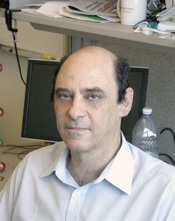

Gala 2011 - Tables and Topics
(Thursday April 28 at MaRS)
There are 25 tables. Here are Tables 13 to 25.
For Tables 1 to 12, go HERE
